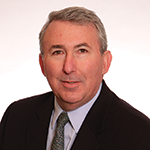Welcome to the first edition of the President’s Corner! I am grateful to Bharat Kumar, MD, MME, FACP, FAAAAI, RhMSUS, and the editors of The Rheumatologist for their support and encouragement in allowing me to have this opportunity each month to come together with rheumatologists and rheumatology health professionals.
So why the President’s Corner? In two words—community and connection. In developing my three presidential priorities of education, research and enhancing connections, shining a light on the ways in which the ACR represents and serves all of us as a rheumatology community became an encompassing theme. This was brought through to me even more clearly by the goals of our immediate past president, Deborah Dyett Desir, MD, to whom I wish to express my sincere thanks for her leadership and guidance.
Although we have seen the rapid expansion of electronic connectivity over recent years, what has not grown proportionately has been our ability to have a meaningful sense of connection within our community and with the ACR as our professional organization. It is my hope that the President’s Corner becomes a place where rheumatology specialists can learn more about what the ACR is doing to support them, with a goal of strengthening those connections.
An Auspicious Beginning
My first introduction to the ACR was in 1991, when I was a fellow attending the annual meeting being held at the John B. Hynes Memorial Convention Center in Boston. I was taken aback by the newest discoveries and education, and what struck me the most was the incredible sense of community that was being brought together by the ACR.
I attended a Meet the Professor session on scleroderma, where I hoped to learn some strategies for a very sick patient, and met a clinician in private practice sitting next to me who was there for the exact same reason. I heard lectures from experts whose names I had seen at the top of a scientific paper and got to meet them.
In the poster hall, I saw the latest science being discussed, including by fellows just like me who were presenting their work to an ACR Master. Through the ACR, I felt a true sense of belonging, and from that point on, I knew that this was an organization that I wanted to be a part of.


